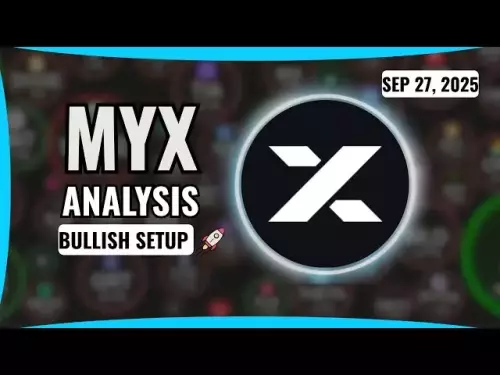-
 bitcoin
bitcoin $109523.663807 USD
-0.13% -
 ethereum
ethereum $4019.526508 USD
2.06% -
 tether
tether $1.000482 USD
0.00% -
 xrp
xrp $2.776815 USD
0.18% -
 bnb
bnb $958.942396 USD
0.12% -
 solana
solana $204.294698 USD
3.84% -
 usd-coin
usd-coin $0.999693 USD
0.00% -
 dogecoin
dogecoin $0.232115 USD
2.09% -
 tron
tron $0.338028 USD
0.84% -
 cardano
cardano $0.790920 USD
1.50% -
 hyperliquid
hyperliquid $44.871443 USD
5.60% -
 ethena-usde
ethena-usde $1.000322 USD
0.04% -
 chainlink
chainlink $21.034165 USD
2.60% -
 avalanche
avalanche $28.794831 USD
-0.54% -
 stellar
stellar $0.360466 USD
1.24%
How to secure your mining wallet and earnings?
Securing your crypto mining earnings with a hardware wallet, MFA, and cold storage is essential to protect against hacks and ensure long-term safety.
Aug 12, 2025 at 12:50 am
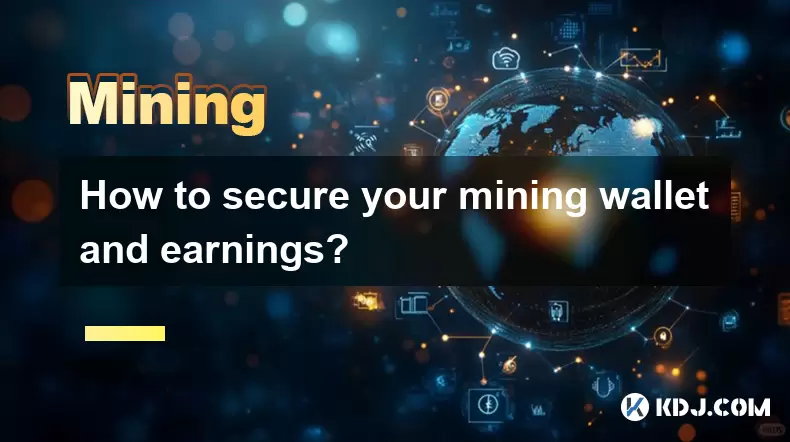
Understanding the Importance of Wallet Security in Crypto Mining
In the world of cryptocurrency mining, securing your wallet is as crucial as the mining process itself. Miners earn digital assets as rewards for validating transactions or solving complex algorithms, and these earnings are stored in a digital wallet. If this wallet is compromised, all accumulated coins can be lost instantly. The decentralized nature of cryptocurrencies means there is no central authority to recover stolen funds. This makes proactive security measures essential. Every miner, whether operating a single GPU or managing a large-scale mining farm, must treat wallet protection as a top priority. The wallet serves as the final destination for mining payouts, making it a prime target for cybercriminals.
Selecting the Right Type of Wallet for Mining Earnings
Not all wallets offer the same level of security or convenience. For mining operations, the choice of wallet type significantly affects safety. Hardware wallets like Ledger or Trezor are widely considered the most secure because they store private keys offline, making them immune to online hacking attempts. These devices require physical confirmation for transactions, adding an extra layer of protection. Software wallets installed on computers or mobile devices are more accessible but are vulnerable if the host system is infected with malware. Web-based wallets, while convenient, are the riskiest due to their constant internet connectivity. For miners, it is strongly recommended to transfer earnings from a mining pool’s internal wallet to a personal hardware wallet as soon as possible. This minimizes exposure to exchange or pool-level breaches.
Implementing Multi-Factor Authentication (MFA)
Even the most secure wallet can be compromised if access credentials are weak. Multi-factor authentication (MFA) adds a critical layer of defense. When enabled, MFA requires more than just a password—typically a time-based code from an authenticator app like Google Authenticator or Authy. For mining pools and exchange accounts linked to your wallet, MFA should be mandatory. Avoid using SMS-based authentication, as SIM-swapping attacks can intercept text messages. Instead, use authenticator apps or hardware security keys such as YubiKey. Ensure MFA is activated on every platform where your wallet interacts, including email accounts used for wallet recovery. A compromised email can lead to full account takeover, so securing it with MFA is non-negotiable.
Creating and Safeguarding Your Private Keys and Seed Phrases
The foundation of wallet security lies in the private key and the recovery seed phrase. These are the only means to access your funds if your device is lost or damaged. Never store your seed phrase digitally—this includes screenshots, text files, or cloud storage. Instead, write it down on physical media such as a metal seed vault or acid-free paper. Store this in a secure location like a fireproof safe or a safety deposit box. Avoid sharing the seed phrase with anyone, and never enter it on any website. Scammers often create fake wallet interfaces to steal this information. When setting up a new wallet, do so in a private, secure environment free from surveillance. Confirm that the device used is clean of malware and not connected to public Wi-Fi during setup.
Regularly Updating Software and Firmware
Outdated software is a common entry point for attackers. Mining software, wallet applications, and firmware on hardware wallets must be kept up to date. Developers frequently release patches to fix security vulnerabilities that could be exploited. For example, Ledger regularly updates its firmware to protect against known attack vectors. Enable automatic updates where possible, or establish a routine to manually check for updates at least once a week. Before applying any update, verify its authenticity through the official website or GitHub repository. Downloading updates from third-party sites increases the risk of installing malicious software. Also, ensure your operating system and antivirus software are current, as they form the first line of defense against malware targeting your wallet.
Using Cold Storage for Long-Term Mining Earnings
For miners who accumulate significant earnings over time, cold storage is the safest option. Cold storage refers to keeping cryptocurrency in wallets that are completely disconnected from the internet. Hardware wallets are a form of cold storage, but so are paper wallets and air-gapped computers. Transferring large portions of mining income to cold storage reduces the risk of loss from online threats. Only keep a small, necessary amount in a hot wallet (connected to the internet) for daily operations or exchange transactions. When moving funds to cold storage, double-check the receiving address for accuracy. Use a trusted computer to generate the address, and verify it on a separate device if possible. Always test with a small amount first to ensure the process works correctly.
Monitoring Wallet Activity and Setting Up Alerts
Proactive monitoring can help detect unauthorized access early. Most wallet applications and exchanges allow users to set up transaction alerts via email or push notifications. Enable these features to receive immediate updates whenever a transaction occurs. Regularly review your transaction history for any unfamiliar activity. If you notice a suspicious transfer, act quickly—disconnect the device, change all passwords, and move remaining funds to a new wallet. Some advanced wallets offer whitelist address features, allowing transactions only to pre-approved destinations. This prevents attackers from sending funds to unknown addresses even if they gain partial access. Combine monitoring with routine backups of wallet data, ensuring you can restore access if needed.
Frequently Asked Questions
Q: Can I use the same wallet for multiple mining pools?Yes, you can direct payouts from different mining pools to the same wallet address. However, ensure the wallet supports the specific cryptocurrency each pool mines. For example, a Bitcoin wallet cannot receive Ethereum. Use a multi-currency wallet like Trust Wallet or a hardware wallet with multi-asset support if managing various coins.
Q: What should I do if my hardware wallet is lost or damaged?As long as you have your recovery seed phrase, you can restore access to your funds on a new device. Purchase a replacement from the official vendor, initiate the recovery process, and enter your seed phrase. Never attempt recovery on a compromised or untrusted device.
Q: Is it safe to keep mining earnings in a pool’s internal wallet?No. Pool wallets are custodial and vulnerable to hacks or operational failures. Withdraw your earnings to a personal wallet regularly, especially if the amount exceeds a safe threshold. Treat the pool wallet as a temporary holding account.
Q: How often should I back up my wallet?Back up your wallet after generating a new address or increasing your holdings. For dynamic wallets with frequent transactions, consider weekly backups. Always store backups securely and verify their integrity by testing restoration on a separate device.
Disclaimer:info@kdj.com
The information provided is not trading advice. kdj.com does not assume any responsibility for any investments made based on the information provided in this article. Cryptocurrencies are highly volatile and it is highly recommended that you invest with caution after thorough research!
If you believe that the content used on this website infringes your copyright, please contact us immediately (info@kdj.com) and we will delete it promptly.
- BTC, mNAV, and Treasury Companies: A New Yorker's Take
- 2025-09-28 02:25:12
- Crypto Crossroads: Is Remittix Overtaking XRP as the Altcoin of Choice?
- 2025-09-28 02:45:14
- ASTER's Surge vs. BlockchainFX Presale: Where's the Smart Money Moving?
- 2025-09-28 03:05:13
- ApeX Coin's Wild Ride: Surge, Protocol Evolution, and What's Next
- 2025-09-28 02:45:14
- Ethereum, Vitalik Buterin, and the Future Outlook: A New Yorker's Take
- 2025-09-28 03:45:13
- ASTER Price Prediction 2025-2030: Will This Crypto Darling Keep Soaring?
- 2025-09-28 03:05:13
Related knowledge
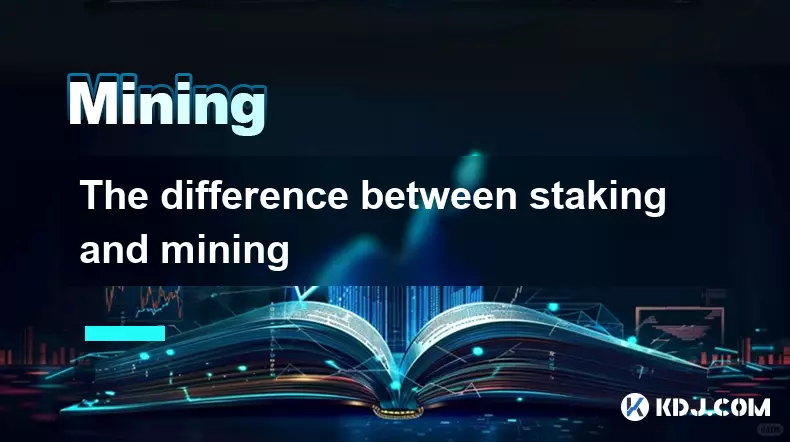
The difference between staking and mining
Sep 24,2025 at 05:18am
Understanding Staking in the Cryptocurrency Ecosystem1. Staking involves holding funds in a cryptocurrency wallet to support the operations of a block...

How to participate in testnet mining?
Sep 22,2025 at 09:18am
Understanding Testnet Mining in the Crypto Ecosystem1. Testnet mining is a method used by blockchain developers to simulate real-world conditions on a...

How to dispose of abandoned mining machines?
Sep 19,2025 at 08:19pm
Assessing the Condition of Abandoned Mining Rigs1. Begin by inspecting each mining machine for visible damage, corrosion, or missing components. Machi...

How to identify high-quality mining pools?
Sep 21,2025 at 03:19pm
Reputation and Track Record1. A mining pool’s reputation is built over time through consistent performance and transparency. Pools that have operated ...
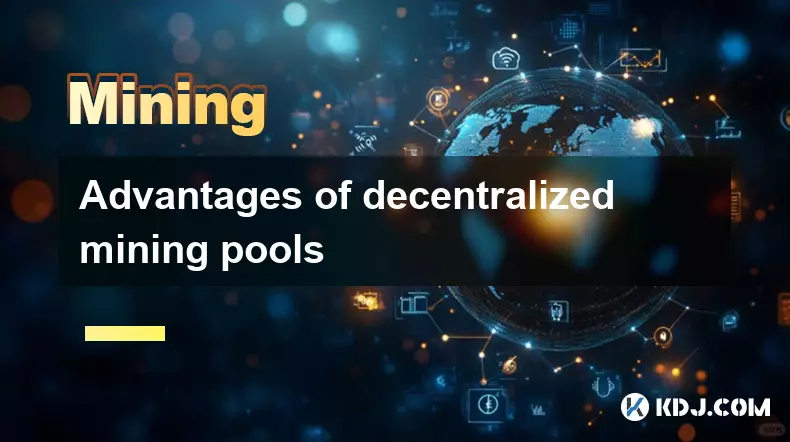
Advantages of decentralized mining pools
Sep 20,2025 at 04:36pm
Enhanced Security and Resistance to Censorship1. Decentralized mining pools operate on blockchain-based smart contracts, eliminating the need for a ce...
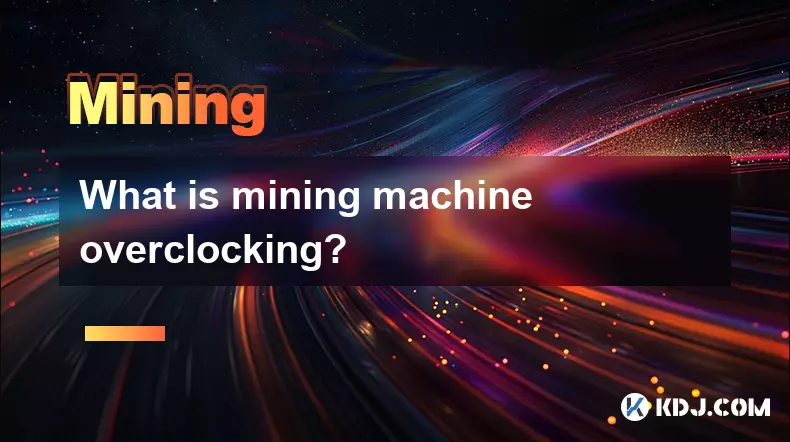
What is mining machine overclocking?
Sep 21,2025 at 07:19pm
Understanding Mining Machine Overclocking1. Mining machine overclocking refers to the process of increasing the operating frequency of a cryptocurrenc...

The difference between staking and mining
Sep 24,2025 at 05:18am
Understanding Staking in the Cryptocurrency Ecosystem1. Staking involves holding funds in a cryptocurrency wallet to support the operations of a block...

How to participate in testnet mining?
Sep 22,2025 at 09:18am
Understanding Testnet Mining in the Crypto Ecosystem1. Testnet mining is a method used by blockchain developers to simulate real-world conditions on a...

How to dispose of abandoned mining machines?
Sep 19,2025 at 08:19pm
Assessing the Condition of Abandoned Mining Rigs1. Begin by inspecting each mining machine for visible damage, corrosion, or missing components. Machi...

How to identify high-quality mining pools?
Sep 21,2025 at 03:19pm
Reputation and Track Record1. A mining pool’s reputation is built over time through consistent performance and transparency. Pools that have operated ...

Advantages of decentralized mining pools
Sep 20,2025 at 04:36pm
Enhanced Security and Resistance to Censorship1. Decentralized mining pools operate on blockchain-based smart contracts, eliminating the need for a ce...

What is mining machine overclocking?
Sep 21,2025 at 07:19pm
Understanding Mining Machine Overclocking1. Mining machine overclocking refers to the process of increasing the operating frequency of a cryptocurrenc...
See all articles


























